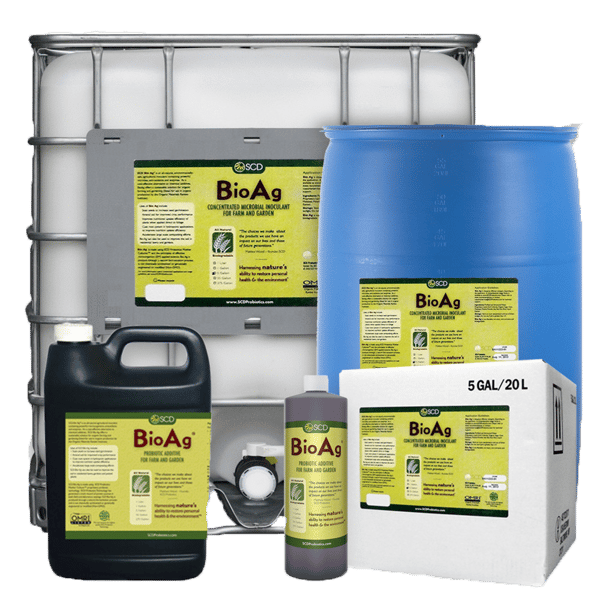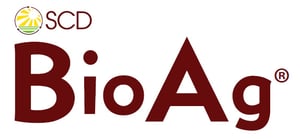
Microbial Inoculant & Soil Amendment
-
Unlock soil nutrients improving on plant health.
-
Naturally increasing biological protection efficiency for maximized yield, quality, and ROI.


SCD® Probiotics is excited to present SCD Bio Ag®, a natural alternative created through a fermentation process that mirrors what occurs in nature. That’s right; a product that is both produced through natural processes and designed to preserve nature!
Our technology was developed from numerous studies and research on beneficial microorganisms. The principles of consortia technology, which allow various microbial strains to co-exist, creating a stronger, more resilient formula, allows us to deliver such a powerful solution. SCD Bio Ag works naturally to aid your soil’s ecology in protecting against these damaging organisms and compounds. What results is an all-natural, sustainable, nutrient-rich environment that provides a natural place for crops, grasses, and flowers to grow. Clean. Simple. Effective. That is what you will find in every bottle of SCD Bio Ag.Why Good Soil Matters*
Unlike so many other natural resources, soil isn’t renewable due to the extremely long duration reproduction takes. This makes it more important than ever to maintain this precious resource.

Healthy soil is the basis of a solid foundation for agriculture.

During times of drought and flooding, soil acts a natural protective barrier, filtering or storing water as needed.

As climate change becomes a rowing threat, we rely more heavily on soil to maintain balance through its ability to trap CO2 while preventing it from escaping into the atmosphere. In fact, soil maintains 10% of the world’s CO2.

Deforestation, urbanization, pollution, and mistreatment of soil are the biggest threats to the health of soil and mankind’s livelihood.

500: the years it takes to form just two centimeters of topsoil - a nutrient-rich agent of nourishment for crops.
How Does SCD Bio Ag Help with Soil?
SCD Bio Ag (a microbial additive) helps create a healthy environment for soil and plants by introducing beneficial microorganisms to dominate harmful microorganisms. Recent research data indicates that Bio Ag has a positive correlation with soil biological activity, which plays a crucial role in the improvement of soil quality. SEM (Scanning Electron Microscopy) reveals that when applied to the soil, Bio Ag increases total fungi, protozoa, rhizobia biomass, enzyme activity, and root hair growth in hairy vetch.*Information sourced from Food and Agriculture Organization of the United States.
SCD Bio Ag® Benefits
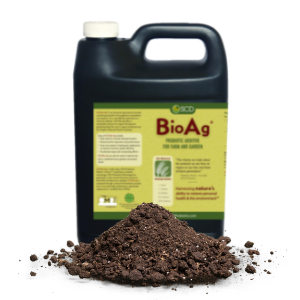
-
Increases seed germination
-
Improves crop performance
-
Improves overall yields
-
Improves soil quality
-
Improves fruit quality
-
Enhances biological nitrogen fixation
-
Accelerates large-scale composting efforts
-
Enriches the soil in residential lawns and gardens
-
Nurtures trees and flowers
-
SCD Bio Ag is produced through a natural fermentation process, and it is not chemically synthesized, genetically engineered or modified.
-
OMRI Listed For Organic Use
-
A concentrated formula for cost-effective application
-
Available in smaller volumes for household usage and "tote" quantities for large-scale operations
-
Easy to use
-
-
Synergistic microbial consortia consisting mostly of Lactic Acid Bacteria, Purple Non-Sulfur Bacteria, and Yeast.

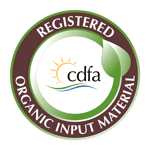
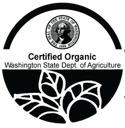
SCD Bio Ag®
- Natural, Organic Materials Review Institute listed (OMRI)
- Systemic approach to improve soil conditions
- Takes less product over time for same result
vs.
Common Chemicals
- Harmful to the environment
- Most are destructive to soil over time
- Takes more product over time for same results
SCD Bio Ag®
- Same product for many applications which allows bulk purchasing
- Approved for use in organic production and farming
- Systemic approach
vs.
Other Bio Products
- One product for each problem or pathogen
- Not always organic, may contain harmful compounds
- Often reactive
SCD Bio Ag®
- Specifically formulated product for soil applications
- Extensive quality control
vs.
Other Consortia
- Similar product for all applications
- No guarantee on quality control
Availability of Soil Nutrients, K, and P
A study spanning 5 years at Warsaw University of Life Sciences Agricultural Experiment Station in Poland, showed a substantial increase in nutrient availability when probiotics were applied with sharply reduced P and K fertilizing (no fertilization and twofold decrease in fertilization). With probiotics, available P increased from 11.7 to 15.9 or a 36% increase and available K increased from 75 ppm to 132 ppm or a 76% increase.
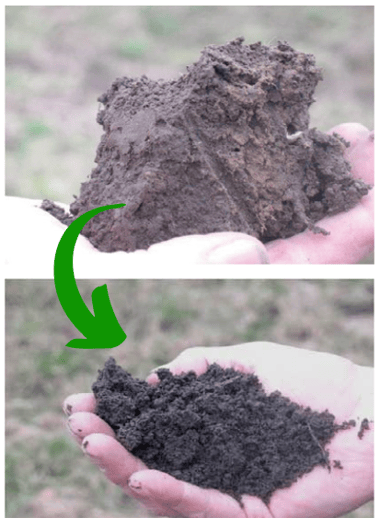
Improving soil quality with SCD Bio Ag®
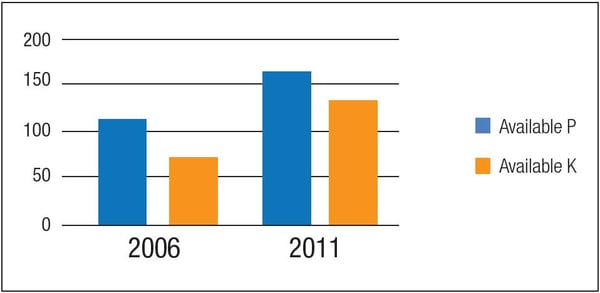
Yield of Potato (Solanum tuberosum)
(100 kg/ha)
A potato farm in Poland started replacing their chemical fertilizers with microorganisms. The applications included different doses of SCD Bio Ag in the ranges of 20-50 L/ha (hectare). The data from 2006 to 2011 showed an increase in yield from 17,600 kg/ha to 24,500 kg/ha (39.2% increase). After SCD Bio Ag applications, the average revenue growth for the farmer was 80% for all stages of cultivation.
Long Term Yield Increase
Yield of Solanum tuberosum (dt/ha*)
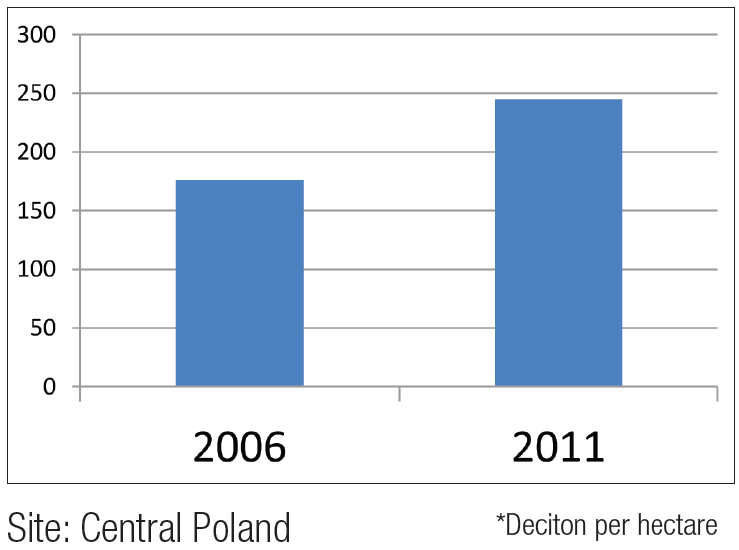
Cost Effective Business Model for the Independent Farmer to Realize Immediate Savings as well as Improve Future Crop Yield
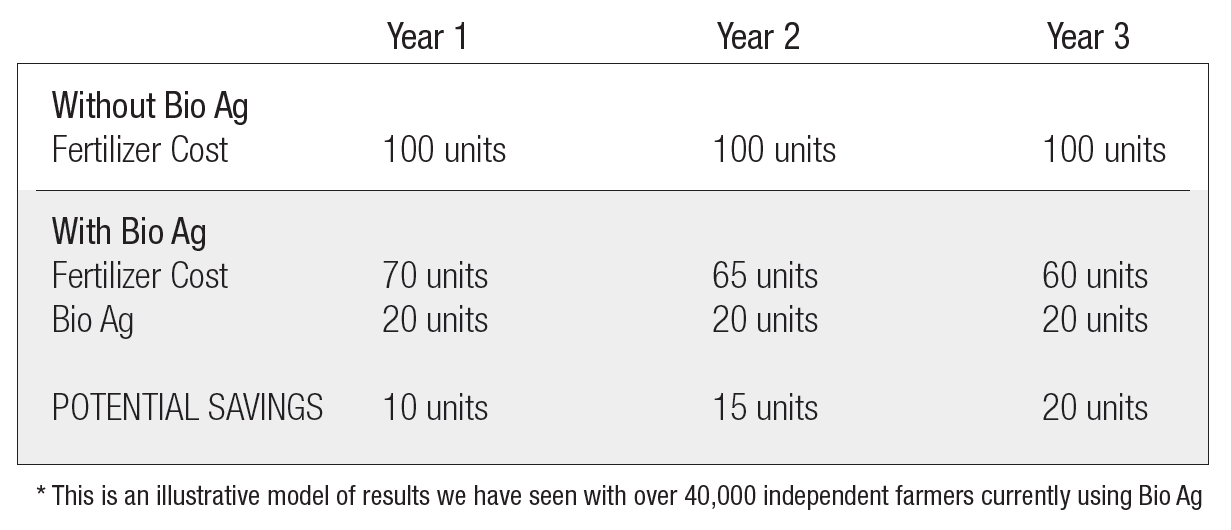
Summary of Key Benefits
1. Decrease the need for chemicals2. Improve nutrient availability in the soil
3. Increase profit for farmers
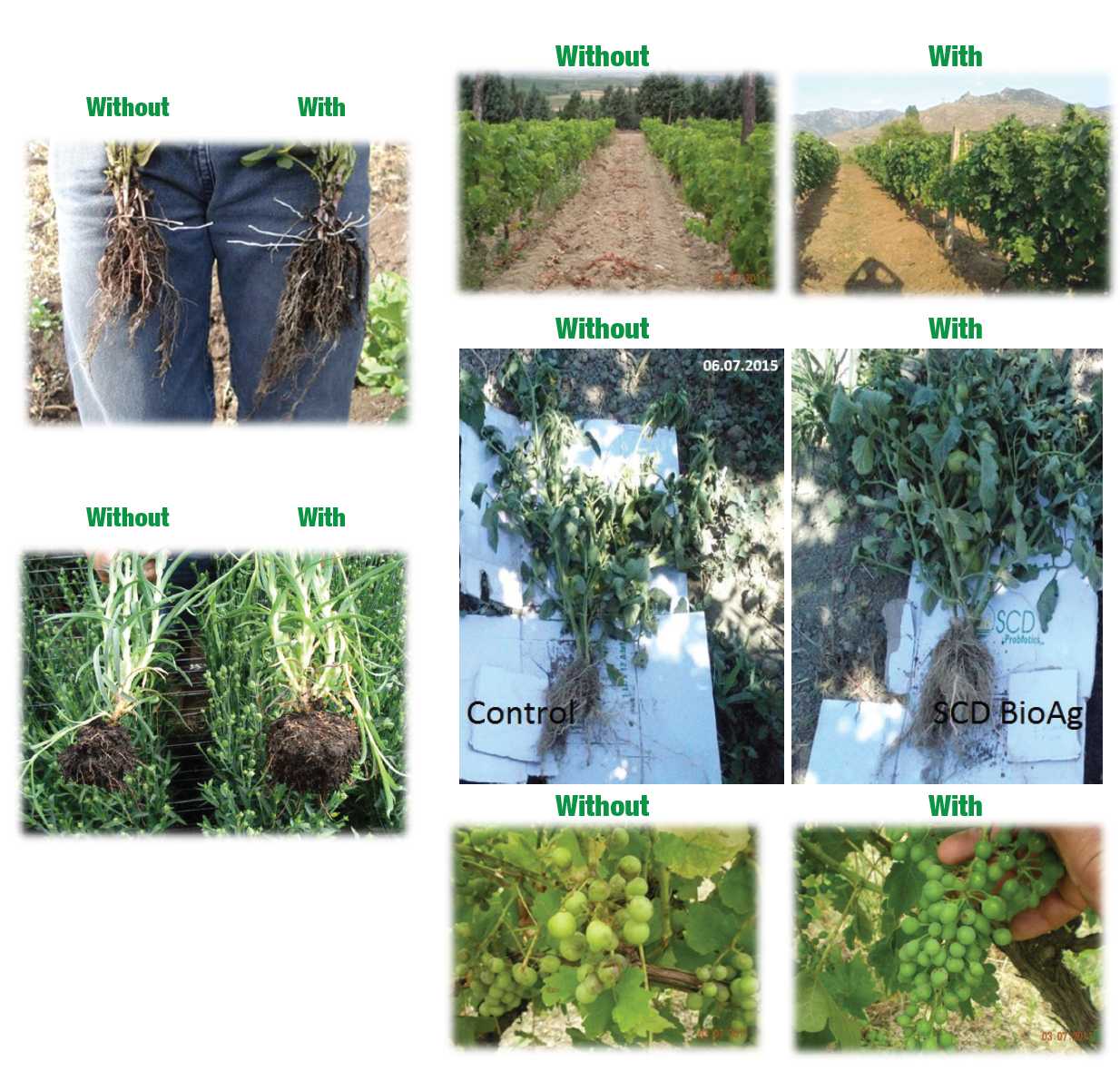
SCD Bio Ag Success Story: Tomatoes from Mexico
A success story of SCD’s Bio Ag was observed at a tomato farm in Mexico where the growth of different varieties of tomatoes' sizes was studied. A comparison of a control group, which was treated with water, and a treatment group, which was treated with SCD Bio Ag, was conducted. The results showed that the larger plants, when treated with SCD Bio Ag, tended to grow much larger than their non-treated counterparts. The Jumbo (J) tomatoes increased by 179% when treated with SCD Bio Ag followed by the Extra Large (XL) tomatoes that showed a 40% increase when treated with the SCD Bio Ag; between the control and the treatment groups, we observed almost the same size in the large (L) tomatoes. The treatment also significantly lessened the amount of medium (M) and small (SM) tomatoes as most of them increased in size and were categorized as a larger variety.
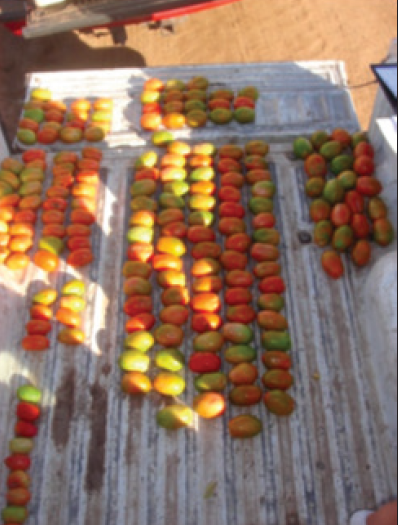
Yield Quality Improvement
% Difference in Tomato Size Class Between Treatment and Control
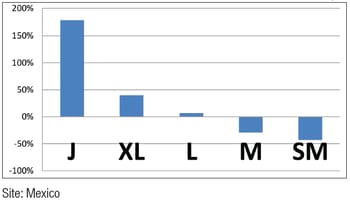
Experimental Group
| J | XL | L | M | SM |
| 7.8 | 14 | 19 | 15.2 | 3.2 |
Control Group
| J | XL | L | M | SM |
| 2.8 | 10 | 17.8 | 21.4 | 5.6 |
SCD Bio Ag® Success Story:
SCD Bio Ag Product is Intended to be Used as a Compost Accelerator
Researchers in Colombia tested SCD Bio Ag to determine the efficiency of the product in the composting process. The time of composting and also the physicochemical and microbiological parameters of the compost were tested. The materials used in the compost were cut grass, dry leaves, green branches, kitchen
waste, and other sources like harvest remains (pulps, rinds, seeds, etc.), The tests were performed after all matter had completely decomposed.
Results showed that the compost treated with SCD Bio Ag had a fast composting time of 35 days. Pathogens such as E.coli or Salmonella were not present in compost, and the heavy metals were below the limits of US Department of Agriculture Compost Heavy Metals Standards in the treated compost material.
Higher temperatures in the thermophilic range reduce the required retention time of compost. In the Colombia trial, the temperature of the compost was around 60 °C on the 12th day, and the compost was ready to use on the 35th day.
| DAY | OBSERVATIONS | TEMPERATURE |
| 0 | Formation of piles + first application | 28 ºC |
| 12 | First turn around + second application. | 60 ºC (average) |
| 24 | Second turn around + no application. | 50 ºC (average) |
| 35 | Product is ready to use. | 30 ºC (average) |
The optimal pH levels for composting range from 7.0 to
8.0. The pH of the treated compost was 7.61. Physicochemical parameters such as density, moisture,
electrical conductivity, and cationic capacity were found at desired values and denoted the quality of compost.
In general, the low C:N ratio (below 30:1) accelerates the rate of decomposition but may cause nitrogen loss leading to foul smelling conditions. The C:N ratio of the Bio Ag treated compost was 7:1 and without foul smelling, due to the help of beneficial microorganism’s odor control efficiency.
The heavy metals measured in the compost were
Cadmium which was at 4.9 ppm (limit is 10 ppm), Nickel at 53 ppm (limit is 200 ppm), Lead at 30 ppm (limit is 250 ppm), Copper at 119 ppm (limit is 1000 ppm) and Zinc at 40 ppm (limit is 2500 ppm), all below the limits of Standards.
Table 1: The parameters with SCD BioAg application to the compost
| PARAMETER | SCD COMPOST |
| Arsenic (ppm) | <1.0 |
| Cadmium (ppm) | 4.9 |
| Mercury (ppm) | <1.0 |
| Nickel (ppm) | 53 |
| Lead (ppm) | 30 |
| Copper (ppm) | 119 |
| Manganese (ppm) | 130 |
| Zinc (ppm) | 40 |
| Boron (ppm) | 36 |
| Appearance | Solid brown color |
| Total Available Nitrogen (N) | 1.66% |
| Total Available Phosphorous (P2O5) | 1.24% |
| Total Available Potassium (K2O) | 1.42% |
| Total Organic Carbon | 11.4% |
| C/N Ratio | 7 |
| Total Organic Matter | 15.2% |
| pH | 7.61 |
| Density | 0.8 gram/cm3 |
| Maximum moisture | 15.9% |
| Water Holding Capacity | 82.9% |
| Cationic Capacity Interchange | 27.5 me/100 gram |
| Ashes (700° C) | 51.1% |
| Volatile losses (%) | 33.1% |
| Electrical Conductivity (dS/m) | 17.6% |
| Total Calcium (CaO) | 7.9% |
| Total Magnesium (MgO) | 0.43% |
| Total Sulphur | 0.38% |
| Total Iron | 0.68% |
| Total Sodium (ppm) | 0.33% |
| Phosphorous soluble (ppm) | <10x104 |
| Nitrificants | 1.5x105 CFU/ml |
| Penicillium spp. | 2.0x104 CFU/ml |
| Actinomycetes | 7.0x106 CFU/ml |
| Gram positive bacteria | 9.0x105 CFU/ml |
| Gram negative bacteria | 1.8x107 CFU/ml |
| E. coli | Absent |
| Shigella | Absent |
| Salmonella | Absent |
Case Study: |
Effects of Probiotics on Soil Microbial Activity, Biomass and Enzymatic Activity in Field Study |
Application: |
SCD Bio Ag® |
Published Paper: |
Agroforest Syst DOI 10.1007/s10457–016-9895-1 |
Where: |
Natural Resources Conservation Service Soil Health Farm, Chariton County, Missouri |
Project
Intensive use of agro-chemicals over the past few decades has resulted in negative impacts on the environment and soil microbial diversity. Use of alternative management such as probiotics is believed to promote soil microbial diversity and enzymatic activity. Soil testing was conducted to see the effects on soil when using a microbial additive, SCD Bio Ag.
Objective
The objective of the study was to evaluate the role of SCD Bio Ag in promoting soil quality by evaluating its effects on soil microbial biomass, microbial community structure and soil enzymatic activities.
Methodology
To combat the detrimental effects that agro-chemicals have on soil microbial diversity, the Natural Resources Conservation Service Soil Health Farm agreed to participate in a study that would test the effects of the probiotic solution SCD BioAg on their farm. The study site included twelve 3m x 8m plots with four treatments in randomized block design. Split applications of probiotics were applied September 2013 and May 2014. The treatments included a non-treated control (2400 mL/ha), treatment #1 (Trt 1; 144 mL/ha probiotic solution with 2256 mL/ha of water), treatment #2 (Trt 2; 216 mL/ha probiotic solution with 2184 mL/ha of water), and treatment #3 (Trt 3; 288 mL/ha of probiotic solution with 2112 mL/ha water). The application of SCD Bio Ag was based on 0, 60, 90 and 120 L/ha per year rates. After applications, soil microbial biomass and community structures were analyzed using phospholipid fatty acid analysis. Standard soil enzyme assays were used to assess microbial activity.
Results and Conclusion
After examining the results, significant differences were observed for total fungi and saprophytic fungi biomass. The Rhizobia levels in the soil bacteria in treatment #3 (Trt3) showed a tremendous increase during the study after the first split application on September 2013 (Trt3: 98.05 ng g-1 and Control: 18.72 ng g-1) (Fig. 1). Protozoa were higher in Trt3 (81 ng g-1) than control (36.61 ng g-1) in June. The significant differences were observed on soil enzymatic activity as ദ-glucosidase (5.19 μg) and FDA hydrolase (8270 μg) activities were higher in Trt3 than the control (respectively 4.63 μg and 5137 μg). Total microbial biomass had a strong positive correlation with total fungi, saprophytic fungi, rhizobia and protozoa biomass in Trt3. There was also a 20% increase in fungi to bacteria ratio from September 2013 to June 2014 in Trt3. Trt3 contains the highest amount of SCD Bio Ag in the mixture, suggesting a direct correlation between the increase of soil quality and SCD Bio Ag’s live microorganisms.
Rhizobia are soil bacteria that fix nitrogen after becoming established inside root nodules of legumes. The contribution of nitrogen through fertilizers causes harsh ecological concerns, making the presence of Rhizobia in soil a
most vital objective.
Microbial biomass (bacteria and fungi) is a measure of the mass of the living component of soil organic matter. The microbial biomass in the decomposed plant, animal residue, and soil organic matter released lower levels carbon dioxide and enhanced plant-available nutrients.
Soil enzymes increase the reaction rate at which plant residues decompose and release plant available nutrients. The enzymes such as hydrolase and glucosidase facilitate the breakdown of organic matter.
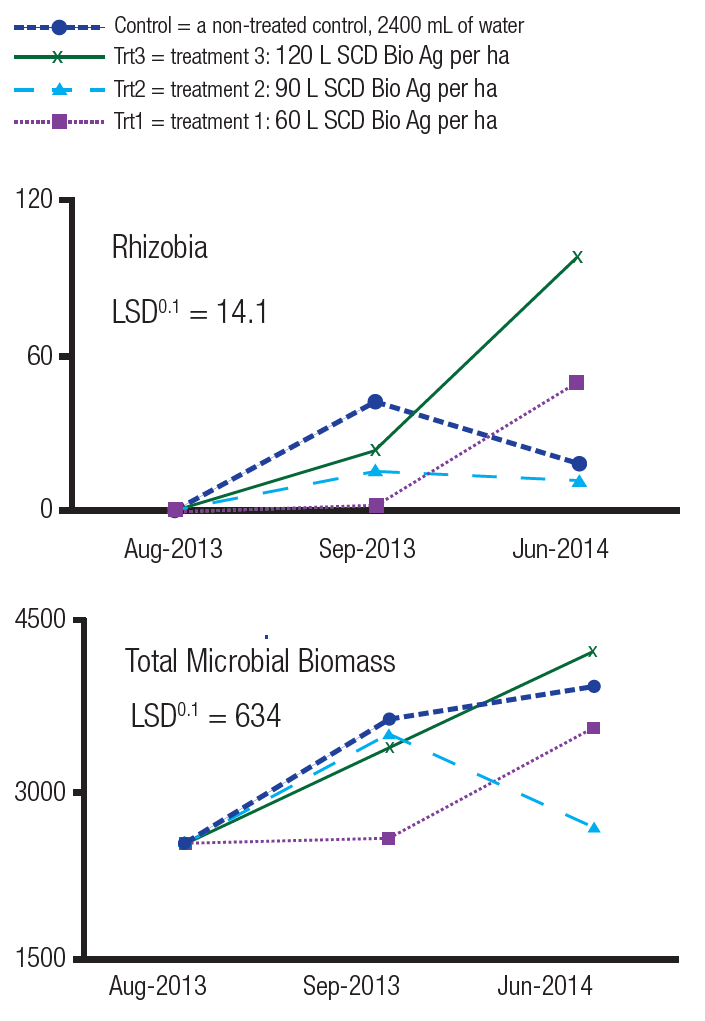
Fig. 1: Rhizobia and total microbial biomass (ng g-1) before the application of SCD Bio Ag (August 2013), after the first split application of SCD Bio Ag (September 2013), and after the second split application of SCD Bio Ag (June 2014).

